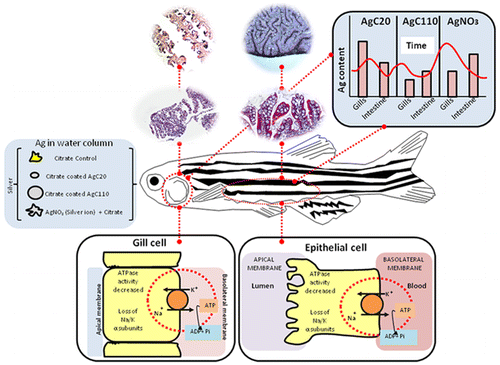I received a news release from a start-up company, New Wave Foods, which specializes in creating plant-based seafood. The concept looks very interesting and sci fi (Lois McMaster Bujold, and I’m sure others, has featured vat-grown meat and fish in her novels). Apparently, Google has already started using some of the New Wave product in its employee cafeteria. Here’s more from the July 19, 2016 New Wave Foods news release,
New Wave Foods announced today that it has successfully opened a seed round aimed at developing seafood that is healthier for humans and the planet. Efficient Capacity kicked off the round and New Crop Capital provided additional funding.
New Wave Foods uses plant-based ingredients, such as red algae, to engineer new edible materials that replicate the taste and texture of fish and shellfish while improving their nutritional profiles. Its first product, which has already been served in Google’s cafeterias, will be a truly sustainable shrimp. Shrimp is the nation’s most popular seafood, currently representing more than a quarter of the four billion pounds of fish and shellfish consumed by Americans annually. For each pound of shrimp caught, up to 15 pounds of other animals, including endangered dolphins, turtles, and sharks, die.
The market for meat analogs is expected to surpass $5 billion by 2020, and savvy investors are increasingly taking notice. In recent years, millions in venture capital has flowed into plant-based alternatives to animal foods from large food processors and investors like Bill Gates and Li Ka-shing, Asia’s richest businessman.
“The astounding scale of our consumption of sea animals is decimating ocean ecosystems through overfishing, massive death through bycatch, water pollution, carbon emissions, derelict fishing gear, mangrove deforestation, and more,” said New Wave Foods co-founder and CEO Dominique Barnes. “Shrimping is also fraught with human rights abuses and slave labor, so we’re pleased to introduce a product that is better for people, the planet, and animals.”
Efficient Capacity is an investment fund that advises and invests in companies worldwide. Efficient Capacity partners have founded or co-founded more than ten companies and served as advisors or directors to dozens of others.
New Crop Capital is a specialized private venture capital fund that provides early-stage investments to companies that develop “clean,” (i.e., cultured) and plant-based meat, dairy, and egg products or facilitate the promotion and sale of such products.
The current round of investments follows investments from SOS Ventures via IndieBio, an accelerator group funding and building biotech startups. IndieBio companies use technology to solve our culture’s most challenging problems, such as feeding a growing population sustainably. Along with investment, IndieBio offers its startups resources such as lab space and mentorship to help take an idea to a product.
Along with its funding round, New Wave Foods announced the appointment of John Wiest as COO. Wiest brings more than 15 years of senior management experience in food and consumer products, including animal-based seafood companies, to the company. As an executive and consultant, Wiest has helped dozens of food ventures develop new products, expand distribution channels, and create strategic partnerships.
New Wave Foods, founded in 2015, is a leader in plant-based seafood that is healthier and better for the environment. New Wave products are high in clean nutrients and deliver a culinary experience consumers expect without the devastating environmental impact of commercial fishing. Co-founder and CEO Dominique Barnes holds a master’s in marine biodiversity and conservation from Scripps Institution of Oceanography, and co-founder and CTO Michelle Wolf holds a bachelor’s in materials science and engineering and a master’s in biomedical engineering. New Wave Foods’ first products will reach consumers as early as Q4 2016.
I found a February 5, 2016 review article about the plant-based shrimp written by Ariel Schwartz for Tech Insider (Note: A link has been removed),
… after trying a lab-made “shrimp” made of plant proteins and algae, I’d consider giving it up the real thing. Maybe others will too.
The shrimp I ate came from New Wave Foods, a startup that just graduated from biotech startup accelerator IndieBio. When I first met New Wave’s founders in the fall of 2015, they had been working for eight weeks at IndieBio’s San Francisco lab. …
…
Barnes and Wolf [marine conservationist Dominique Barnes and materials scientist Michelle Wolf ] ultimately figured out a way to use plant proteins, along with the same algae that shrimp eat — the stuff that helps give the crustaceans their color and flavor — to come up with a substitute that has a similar texture, taste, color, and nutritional value.
The fact that New Wave’s product has the same high protein, low fat content as real shrimp is a big source of differentiation from other shrimp substitutes, according to Barnes.
In early February, I finally tried a breaded version of New Wave’s shrimp. Here’s what it looked like:
Ariel Schwartz/Tech Insider
It was a little hard to judge the taste because of the breading, but the texture was almost perfect. The lab-made shrimp had that springiness and mixture of crunch and chew that you’d expect from the real thing. I could see myself replacing real shrimp with this in some situations.
Whether it could replace shrimp all the time depends on how the product tastes without the breading. “Our ultimate goal is to get to the cocktail shrimp level,” says Barnes.
I’m glad to have stumbled across Ariel Schwartz again as I’ve always enjoyed her writing and it has been a few years.
For the curious, you can check out more of Ariel Schwartz’s work here and find out more about Efficient Capacity in a listing on CrunchBase, New Crop Capital here, SOS Ventures here, IndieBio here. and, of course, New Wave Foods here.
One final comment, I am not endorsing this company or its products. This is presented as interesting information and, hopefully, I will be hearing more about the company and its products in the future.
